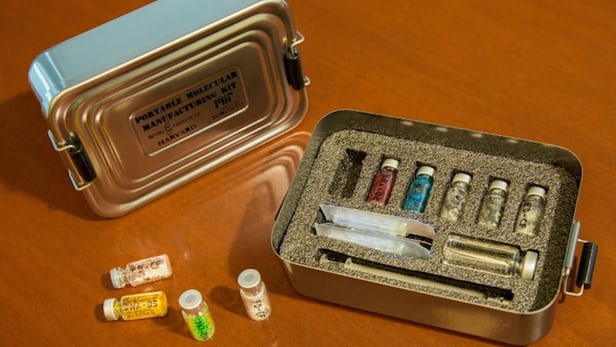
Vaccines and bimolecular treatments are constantly improving, but the logistics of getting them to the front lines of new outbreaks, often in remote locations, remains a challenge. In the latest attempt to find a practical way to produce drugs almost anywhere, a team at Harvard's Wyss Institute has developed a portable system that can produce key biomolecules for treatment on demand, with no need for power or refrigeration – just add water.
The Wyss team's technique for portable biomolecular manufacturing uses freeze-dried pellets containing two types of "molecular machinery" that can be combined in different ways to produce different compounds. Plain old water is the only external ingredient required, and the pellets have a shelf life of up to a year, and possibly longer, meaning they can be transported and stored until needed.
There are two types of pellets, each with different roles. As a base, the reaction pellets contain no cells themselves, but are designed to create different drugs depending on which DNA instructions are introduced from the second type of pellets – the instruction pellets. By mixing and matching the two types, and rehydrating the compound with water, doctors can produce a wide range of vaccines, antimicrobial peptides and antibody conjugates.
These treatments can then be administered to a patient orally, via injection or applied to the skin. Possible applications include making batches of common flu shots, vaccines against emerging outbreaks, oral antibodies to combat food poisoning, and topical peptides to prevent wounds becoming infected.
"This approach could — with very little training — put therapeutics and diagnostic tools in the hands of clinicians working in remote areas without power," says Keith Pardee, co-first author on the study. "Currently, distribution of life-saving doses of protein-based preventative and interventional medicines are often restricted by access to an uninterrupted chain of cold refrigeration, which many areas of the world lack."
Beyond these clinical applications, the technique's low cost – about three cents per microliter – makes it an accessible tool for researchers and students who may not have access to more advanced facilities and equipment.

 Previous page
Previous page Back to top
Back to top







